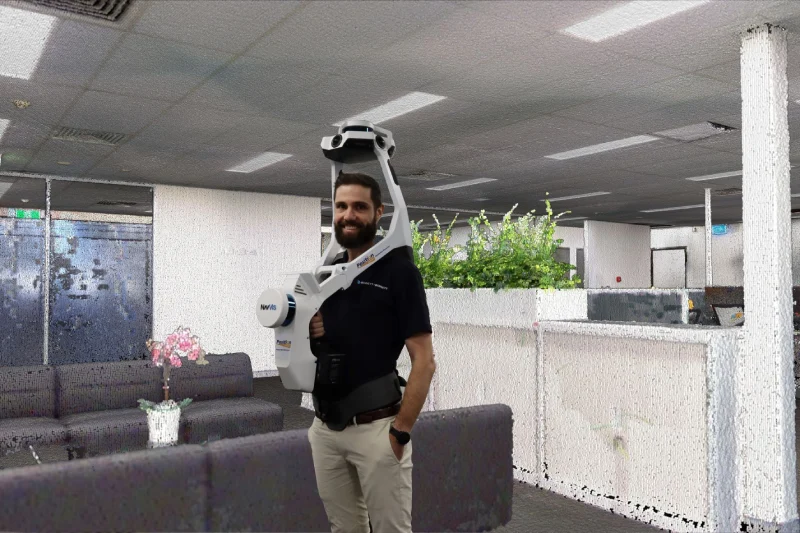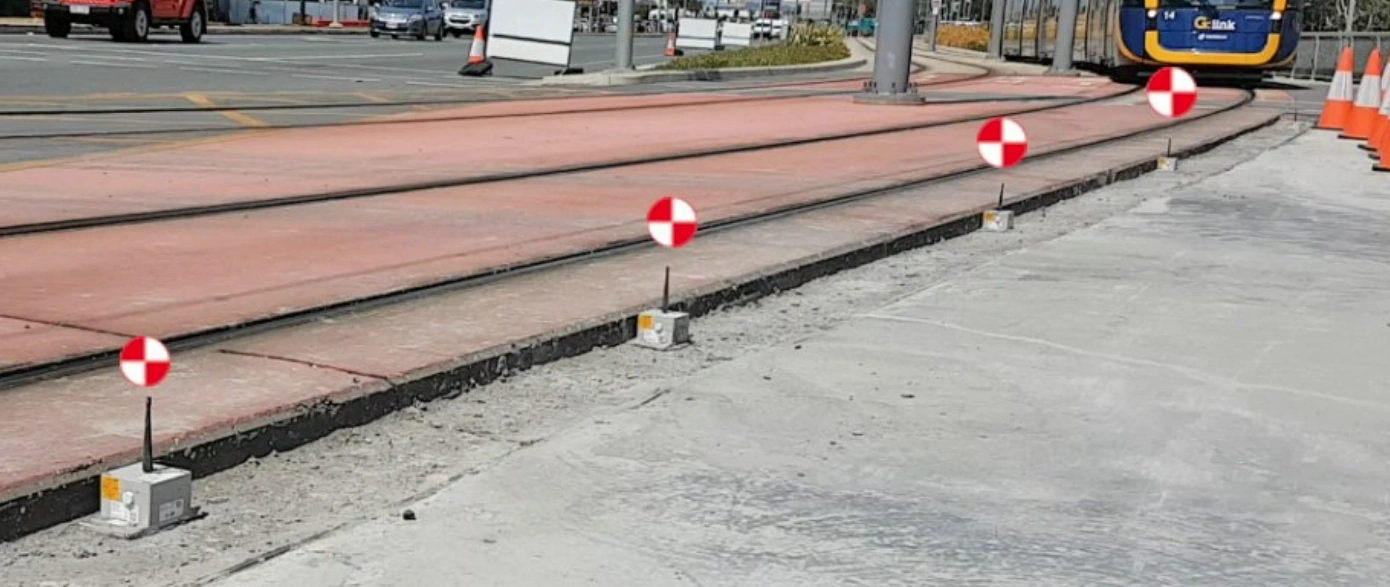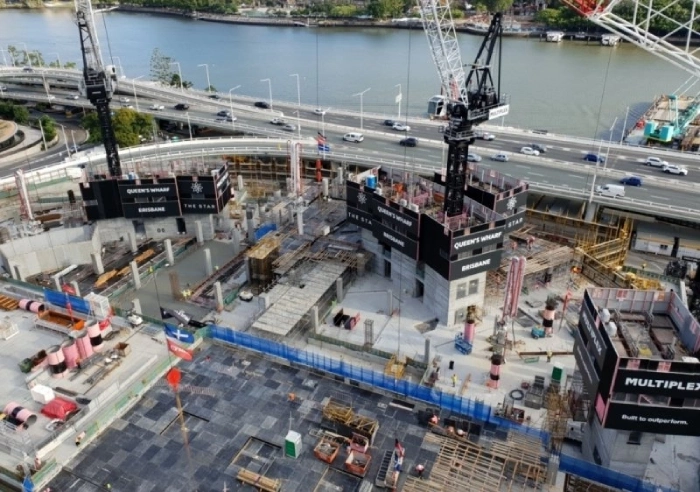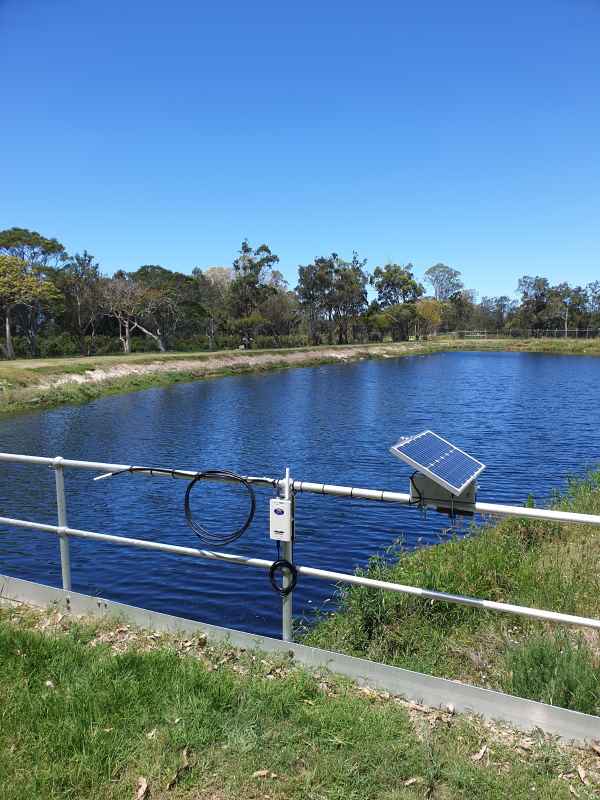Bennett and Bennett has provided land surveying, town planning and spatial services throughout Southeast Queensland for more than 50 years. With more than 100 employees, the company is well resourced for small and large-scale projects and has adapted its business over time to embrace the latest technology and surveying methods.
To complement the firm’s terrestrial mapping capabilities, Bennett and Bennett has recently taken delivery of a NavVis VLX wearable mobile mapping platform, sold and supported in Australia and New Zealand by Aptella. Powered by SLAM technology, the VLX delivers survey-grade point clouds at speed, capturing data as the user walks around the area to be mapped.
Site Map Capability Manager, Liam Thierens, said the NavVis VLX will be used predominantly for Scan to BIM applications. “The VLX fills a gap in our scanning artillery and provides us the ability to quickly capture an environment from all angles without the shadows you find with static laser scanners,” he said.

“We’re excited about the potential time savings and efficiency gains we will see from deploying the VLX in conjunction with our other mapping solutions,” he added.
In addition to the latest mobile mapping solutions, Bennett and Bennett has also introduced wireless condition monitoring and vibration monitoring technology to provide real-time data to clients for infrastructure, construction, and utilities projects.
Working with intelligent solutions provider Aptella, the company first adopted the Senceive wireless monitoring system, which utilises a range of sensors or nodes that are connected wirelessly to a solar-powered gateway. The gateway relays monitoring information in real-time to a web-based reporting platform, giving customers highly accurate data 24 hours a day.
“We’re excited about the potential time savings and efficiency gains we will see from deploying the VLX in conjunction with our other mapping solutions,”
The first project the team deployed a Senceive system to was the Gold Coast light rail project, where they measured for rail track tilt in addition to providing as constructed surveys.
“We learnt a great deal on that project about the system and its capabilities,” company director Chris Swane said.
On the next project at Sparkes Hill reservoir in Brisbane’s north, parts of the reservoir were moving independently, which created weakness in the structure. “We deployed both optical displacement sensors and tilt sensors in order to understand the movement so that an engineered solution could be made,” Mr Swane said.
As with any new technology, the upskilling and on-boarding process was important to get right. “The support and advisory capacity of the local Aptella team in Brisbane has been excellent,” Mr Swane said. “They provided a great deal of advice about the systems and helped us understand the different options and suitability, which changes over time as new technology becomes available. We also relied on them for training and getting the systems configured. I can’t fault Aptella on the assistance and support we’ve been provided.”

Prior to introducing the Senceive wireless monitoring platform, Bennett and Bennett used traditional surveying techniques to monitor movement in structures. “On a historic building, for example, we would have relied on angular measurement – reading multiple angles to a wall and setting up brackets at the top of the structure and at the bottom so that we could measure for any movement,” Mr Swane said.
“Those methods take a lot of time, you have to be on site to take those readings, whereas the Senceive and Omnidots systems operate around the clock once it’s setup,” he added. “Then of course there’s the cost to factor in, having a surveyor on site to take those measurements at the standard charge out rate makes it much more cost effective for our clients to have the wireless monitoring systems installed on their sites.”
Mr Swane said that in addition to the constant data feeds and cost savings from wireless condition monitoring technology, the ability to configure alerts for different parameters of movement or vibration is also well received by clients. “There’s definitely some education involved to explain what these alerts really mean and relate them back to the millimetres of movement they relate to,” he explained.
“But the good thing about these systems is that you can set different levels of alerts that perhaps go to different stakeholders. For example, a low-level alert might go to the consultant and the surveyor as a forewarning, but a more critical alert level might go to the client and perhaps the builder on site, so if they hear or see it trigger they know to stop work immediately.”
Another benefit Mr Swane cites is that vibration monitoring technology delivers a greater level of traceability. “Clients can compare any potential movement from the start of the year to the end of the year, or with vibration they can analyse trends in activity over time,” he said.

A high-rise tower in Brisbane’s CBD was monitored for movement as well as vibration during excavation work for the Albert Street Tunnel, part of the city’s new Cross River Rail project.
Bennett and Bennett used Senceive’s wireless FlatMesh monitoring system and a combination of both tilt and optical displacement sensors to measure for the slightest movements in the tower, with live data available around the clock to the Bennett and Bennett team and other project and building stakeholders.
Bennett and Bennett was also one of the first companies in Australia to adopt the Omnidots SWARM vibration monitoring technology, that had only recently become available through Aptella.
Omnidots specialises in easy to setup, autonomous, reliable vibration monitoring systems for use in infrastructure and geophysical applications. The Omnidots solution comprises the SWARM vibration sensors that can be quickly and easily installed on almost any surface. The sensors wirelessly transmit vibration data to the HONEYCOMB web platform in real time, 24 hours a day.
“The vibration monitoring technology was new to us and new to Aptella, who had only just brought them into the country,” Mr Swane said. “As a surveying business, one thing that is really important to us is the accuracy of the equipment we’re using and being able to explain and verify to a client that what we’ve just measured or monitored is adequate.”
One of the first questions Bennett and Bennett asked the team at Aptella was whether they had calibration certificates for this new vibration monitoring equipment. Although calibration certificates are standard on traditional survey instruments such as robotic total stations, they were less common to the monitoring industry, so Aptella worked with Senceive and Omnidots engineers to get them.
“It really helps that Aptella was able to deliver these certificates because now when a client asks us to demonstrate the monitoring technology’s suitability and that it is fit for purpose, we have calibration certificates to verify the systems’ accuracy,” Mr Swane said.
Before adopting their own vibration monitoring technology, Bennett and Bennett had to outsource vibration monitoring work to a third party. “It’s not as profitable for us to collaborate with a third party, but at the same time because we didn’t have the in-house expertise, we considered it a bit of a risk to undertake the work ourselves,” Mr Swane said.
For the high-rise tower project, Bennett and Bennett agreed with the property manager and structural engineer that Bennett and Bennett would be responsible for gathering the vibration data, but responsibility for interpreting the data would fall to the structural engineer.
“With that agreement in place and the calibration certificates to verify the accuracy of the technology, everyone was clear that we would be providing quality information and an expert was going to interpret that information and there was low risk to us,” Mr Swane said.
Mr Swane explained that the company has taken the same approach with all monitoring work undertaken, whereby the responsibility is in providing the client with relevant, accurate data for an expert – usually a structural engineer – to analyse and take action as required.technolo
“We set up alerts as well as dashboard access for the building manager and the structural engineer, which they valued enormously because they could check the information themselves whenever they wanted to.”
“I believe they also gave access to some tenants in the building who were particularly concerned about the construction work going on around them and the vibration it was causing to the building. When they had full visibility and could see that the vibration was kept below alert levels, it gave them peace of mind,” he added.
Bennett and Bennett also utilised standard digital levelling techniques to monitor subsidence on the tower, as well as a Vernier micrometer for measuring cracks. “We were keen to try out Senceive’s crack monitoring technology, however the real-time, 24/7 data it provides wasn’t required on this project as we only needed to record measurements every six months,” Mr Swane said.
At the Elanora wastewater treatment plant on the Gold Coast, Bennett and Bennett was engaged to monitor subsidence and movement of the building as it was underpinned over a 3-month period.
The Bennett and Bennett team, led by Project Manager / Associate Liam Murphy, deployed a combination of Senceive’s tilt and optical sensors to monitor the movement of the walls as they underpinned the building. “The client wanted real-time reporting on the movement while they were doing the work to determine if what they were doing was causing movement, which it was,” Mr Swane said.
“Like we did for the high-rise tower, alerts were put in place for the Elanora stakeholders that activated their mobile, tablet or desktop computer if movement occurred that was outside the tolerance levels,” he added. “With the Senceive system we were able to graph the results over the 3-month period and demonstrate that there was some movement at certain times when the work was taking place, and that it stabilised after the work,” Mr Swane said.
Mr Swane said the company’s aim is to use the monitoring systems on live construction projects. “We’d like to monitor movement of sheet and contiguous piles or basement works and also monitor adjoining buildings and vibration during the construction processes,” he said.
Like many surveying businesses, Bennett and Bennett has adapted to embrace newer surveying instruments to offer clients a broader service offering. “The wearable scanner and monitoring systems are the latest additions to the company and are in line with some of the more high-tech emerging services we now offer. From 3D mapping and BIM applications, to conformance reporting, construction, and monitoring, it all ties well together and enables us to provide wholistic solutions for our clients,” Mr Swane explained.


We source, deploy and support intelligent positioning solutions to enhance our customers’ productivity.
Aptella Pty Ltd
ABN 56 130 367 065